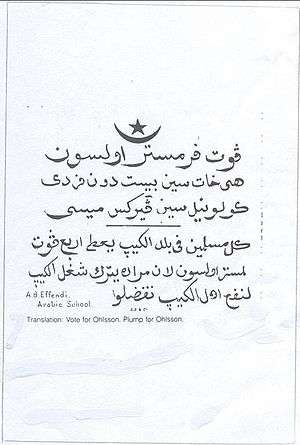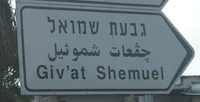Ve (Arabic letter)
Ve (based on name of the letter ف fāʾ) ڤ is a letter of the Arabic-based Central Kurdish, Comoro, Wakhi, Karakhanid alphabets derived from the Arabic letter fāʾ (ف) with two additional dots. It represents the sound /v/ in the aforementioned uses.

It is sometimes used in Arabic language to write names and loanwords with the phoneme /v/, such as ڤولڤو (Volvo) and ڤيينا viyenna (Vienna), but rather described, for example, in Egyptian Arabic, it is called fe be talat noʾaṭ (فه بتلات نقط, "F with three dots").
It is also frequently used in Israel for transcribing names that have a /v/ sound into Arabic, which is used on Israel's street plates, on signs and labels.
In Jawi script, used for Malay language, ڤ stands for /p/.
The character is mapped in Unicode under position U+06A4.
| Position in word: | Isolated | Final | Medial | Initial |
|---|---|---|---|---|
| Glyph form: (Help) |
ڤ | ـڤ | ـڤـ | ڤـ |
Similar-looking letter

The Maghrebi style, used in Northwestern Africa, the dots moved underneath (Unicode U+06A5), because it is based on the other style of fāʼ (ڢ):
| Position in word: | Isolated | Final | Medial | Initial |
|---|---|---|---|---|
| Glyph form: (Help) |
ڥ | ـڥ | ـڥـ | ڥـ |
In Tunisian and in Algerian , (ڨ, looks similar to ق but with three dots) is used for /ɡ/, such as in names of places or persons containing a voiced velar stop, as in Gafsa (in Tunisia) or Guelma (in Algeria). If the usage of that letter is not possible for technical restrictions, qāf (ق) is often used instead.
In Arabic script representations of the Chechen language, ڨ is used to represent the uvular ejective /q'/.

| Position in word: | Isolated | Final | Medial | Initial |
|---|---|---|---|---|
| Glyph form: (Help) |
ڨ | ـڨ | ـڨـ | ڨـ |